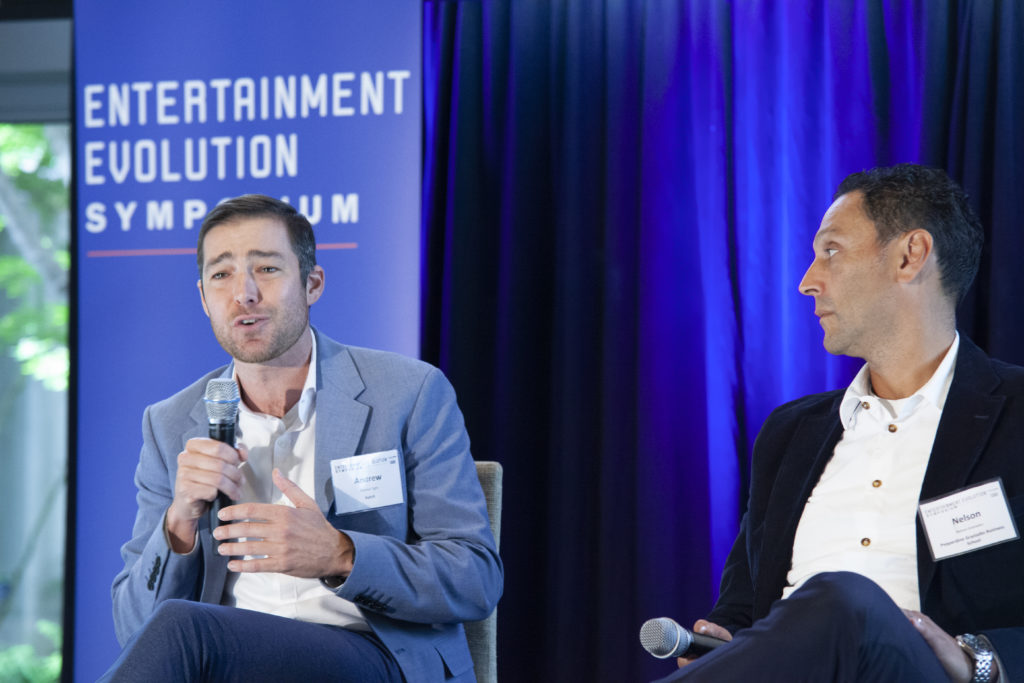
EES: A Journey Through the Media Genome With Katch
Tech company Katch is on a mission to both make the concept of movie and TV show “genre” obsolete as well as use its proprietary Media Genome and advanced data science to empower Hollywood studios, streamers and production companies to deeply understand their content libraries and engage audiences on a more profound level than ever before, according to Andrew Tight, the company’s CEO and co-founder.
Noting that he’s a “movie producer by trade,” Tight said Sept. 21 at the Entertainment Evolution Symposium (EES) that he served in that capacity at Lionsgate for several years.
“When I was producing, I realized that I had such a hard time understanding who my audience was,” he told attendees during the session “The Media Genome: What’s the Katch?”
“We were spending millions and millions of dollars to produce movies, to market movies, and we just were flying a little bit blind,” he pointed out. “It was a lot of Google and gut instinct” and his thought was there had to be a better way to understand who a film’s audience truly included, he said,
 What stands to solve that dilemma is Katch’s Media Genome, designed by the creator of Pandora Radio’s DNA, which he said consists of more than 2,500 elements to understand why we like what we like. The Media Genome captures aspects from cinematography, context, directorial approach and score through human-augmented artificial intelligence (AI), according to the company.
What stands to solve that dilemma is Katch’s Media Genome, designed by the creator of Pandora Radio’s DNA, which he said consists of more than 2,500 elements to understand why we like what we like. The Media Genome captures aspects from cinematography, context, directorial approach and score through human-augmented artificial intelligence (AI), according to the company.
“I looked around and the company that I landed on that knew audiences better than anybody was Pandora Radio,” Tight said. “When Pandora made a recommendation, it didn’t just say, ‘Here’s a song you’re going to love.’ It’ll say, ‘Here’s a song you’re going to love, and then here’s why we’re making this recommendation,’ tapping into what really mattered to … the audience. And so the thought was: ‘Could you do that but for film and television?’”
Katch was launched at the end of 2019 and “it’s been a real journey since,” Tight told attendees.
“What we found is that it’s not possible right now to get to [a] granular level, the level that you need to get to in order to confirm that you have accurate, consistent data because as, as you all know, in order to do great data science, you need clean data,” he said. After all, he added: “You know, dirty data in, dirty data out.”
What has happened in the media and entertainment industry “that’s so interesting is that the industry turned from a B2B business to a B2C business,” he went on to say. “Back when I was producing movies, I’d make a movie and I’d give it to the movie theater and they’d release it and I’d get some box office numbers [and] maybe some demographic information but that’s about it. Or we’d give it to Walmart and they would release it and I’d get some number of units sold but that’s it.”
However, he explained, “with streaming, all of a sudden we have a B2C business where these movie studios, the Disneys, the Paramounts, the Universals of the world have this direct relationship and everyone is trying to understand the same thing: ‘Who is my audience and what do they resonate with?’”
While there are “companies out there that help you understand your audience … what I would argue is that you can’t understand your audience until you understand your content,” he said. “Because if you have a deep understanding of content, you can pair that with behavioral data that start to tap into why certain audience segments resonate with a piece of content. And so our clients are using us to touch the entire life cycle of a piece of content, whether that’s in the development phase or the production phase or green lighting” phase, he added.
The session was moderated by Nelson Granados, professor of Information Systems & Technology Management at Pepperdine Graziadio Business School.
The Entertainment Evolution Symposium (EES) was presented by the Pepperdine Graziadio Business School Institute for Entertainment, Media and Sports (IEMS) and the Hollywood IT Society (HITS) and was sponsored by Iron Mountain, Signiant, Whip Media, Atos, Fortinet, FPT Software, invenioLSI, Perforce, Vision Media, and EIDR.
